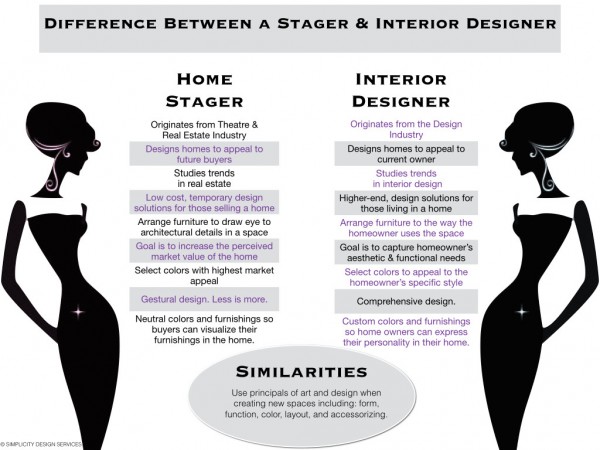
Post by In-House AFA Stager Darlene White
Your home has been professionally designed by an interior designer. You love the beautiful blue damask pattern that wraps the walls of your dining room. The chartreuse Bergère chair is a testament to your character: classic yet fun and unexpected. Your home has been an extension of your personality and you’ve taken great pride in each painstaking decorative element. Friends have admired your personal style. Your designer has captured the essence of what makes your home uniquely you. Though heartbroken, you’ve accepted that the time has come to create a new life in a new space.
Preparations have been in place for several months, from decluttering to pre-packing a lifetime of memories. Imagine your surprise when your Realtor tells you that you need to stage prior to going on the market. “Stage my home?!?” you question, somewhat insulted, but your voice remains tepid. “My home has been professionally designed.” Your Realtor senses your discomfort. Though it’s clear she was well-intended, she simply can’t be serious. “Why would I need to stage my home?”
There is a common misconception that staging is unnecessary when a home has been designed by an interior designer. While good stagers utilize some of the same principles as interior designers in practice, staging has the opposite objective from interior design. Here’s a deeper look into the practice of staging which may help shed some light on the differences:
1. Interior design gets its foundation from art and design. The term “staging” coined by Barb Schwartz, the creator of home staging, actually borrowed the technique from theatre for use as a sales strategy in real estate. One of Ms. Schwartz’ clients was a thespian and avid collector of theatre memorabilia. He had amassed quite the collection throughout his home. She was trying to convey to him that buyers couldn’t actually see the home because they were distracted by his theatre artifacts. Her client just didn’t understand. In a theatrical reference, she asked him to imagine his home was “on stage and each room was a scene that tells a story, like a good set design”. Suddenly he understood.
The artifacts were put away, the home was staged, and the term “staging” was born. In the theatre, sight lines are created by the director to draw the eye to key areas of the stage deemed important to telling the story. A major objective of staging is creating sight lines by way of strategic furniture and accessory placement of to draw the eye to the architectural details of the room that add value. This is different from interior design, in which furniture is strategically arranged to suite the functional needs of the home owner.
2. Colors that are selected by an interior designer will often be very different from those that are selected by stagers. Interior designers are trained to select colors and wallpaper that are specific to the tastes of the homeowner, often pulling from art or furnishings in the room. Most stagers look to neutralize color and often suggest wallpaper be removed if it’s too taste specific to appeal to the mass buying market.
3. Stagers study what is trending for real estate sales, which can be different from what is trending in interior design. Staging focuses on neutral colors, fabrics, and styles. Interior design often involves more specific furniture styles and bold uses of color and pattern that are very custom to the homeowner.
4. When an interior designer works on a room, they are developing plans that reflect the homeowner’s personality.Stagers design homes that reflect the buyer’s wants and needs. To do this effectively, good stagers work with the Realtor to determine the target market. They study the buying trends and design styles of this market and incorporate this into the staging of the home. The stager’s job is to neutralize homes with a style that appeals to the broadest audience. Expensive furnishings that sellers have treasured are sometimes removed for the staging because they are too taste-specific. Heavy, ornate, or too many furnishings are a major obstruction to a homebuyer seeing the true architecture, square footage, and potential for their style and furnishings in the home.
5. When an interior designer plans a room design, they consider the way a homeowner desires to live in it. A stager designs that same space for best market value. For example, a homeowner may have hired an interior designer to create a home office out of a spare bedroom. The stager, however, recognizing that a four bedroom in this community may be more valuable in the marketplace to the homeowner than a three bedroom, suggests this room return to a bedroom to maximize its value.
6. Interior designers are also generally accustomed to working with larger budgets. Stagers perfect the art of creating a look for less, which is a logical necessity for those selling a home. They develop relationships with furniture vendors or carry their own neutral furnishings for temporary rental. Interior designers develop relationships with furniture vendors that offer higher quality for permanent ownership.
Interior designers and stagers share a common interest in creating spaces that are balanced and aesthetically pleasing to the eye. Both industries consider flow and form, but ultimately have opposing goals. A good stager can bridge a seamless gap between the two industries so that a room feels warm, inviting, and balanced though neutral enough to allow buyers to see someone else’s house as their new home.
Darlene White
VP of Staging & Design
afainteriors
203.864.3350
darlenew@afahomes.com




Speak Your Mind